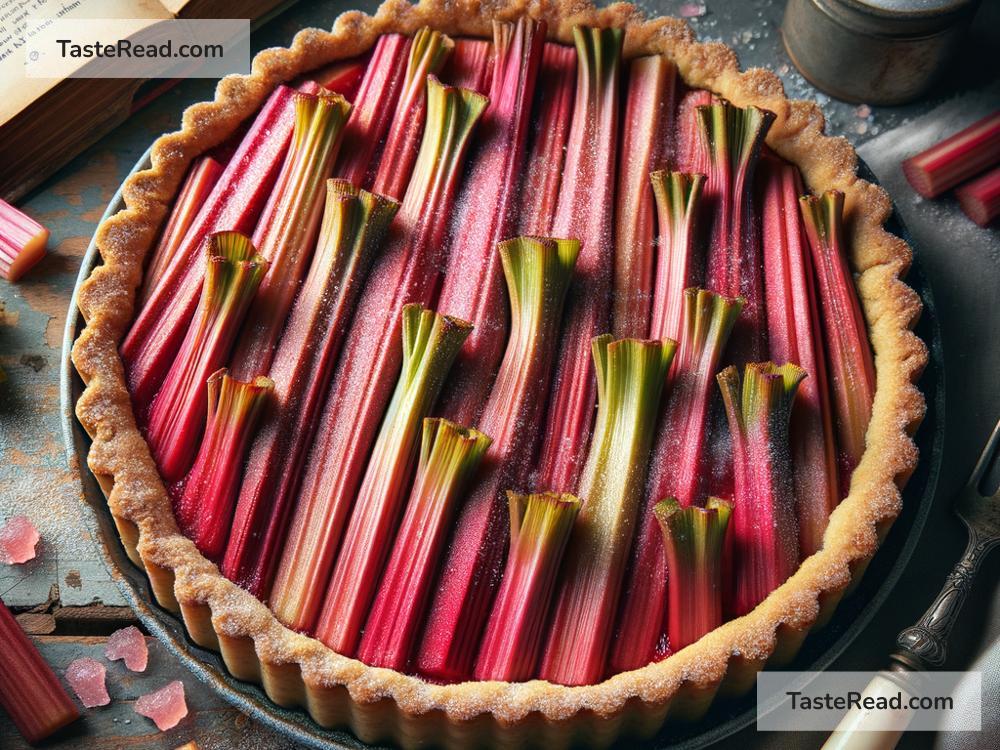The Fascinating History of Rhubarb in European Desserts
Rhubarb is one of those ingredients that has found a sweet spot in European cuisine, especially in desserts. Its unique tangy taste and vibrant color have made it a favorite for pies, tarts, jams, and puddings. But how does a plant that originally comes from Asia end up being a beloved dessert ingredient in Europe? Let’s take a journey through the fascinating history of rhubarb.
What is Rhubarb?
Rhubarb is technically a vegetable, though it’s often treated like a fruit because of how it’s used in cooking. Its thick, celery-like stalks range from green to deep red, and they taste very sour before being sweetened with sugar. Interestingly, the leaves of rhubarb are toxic and should never be eaten!
Rhubarb’s Ancient Origins
The story of rhubarb begins thousands of years ago in Asia. It was originally grown in places like Siberia, China, and Tibet. However, early on, rhubarb wasn’t used for cooking at all—it was prized for its medicinal properties. Ancient healers used rhubarb as a cure for stomach problems and constipation, and it was one of the most valuable trade goods traveling along the Silk Road.
In the 10th century, Arab traders introduced rhubarb to the Middle East. From there, knowledge of the plant began spreading westward into Europe. However, it wasn’t until much later that Europeans started experimenting with rhubarb in their kitchens.
Rhubarb’s Arrival in Europe
Rhubarb arrived in Europe as a medicinal plant long before it became a culinary ingredient. Around the 13th century, it was imported to European cities like Venice and Genoa from Asia via the Silk Road. Because it was rare, rhubarb was extremely expensive—more valuable than spices like saffron or cinnamon—and was treated as a luxury item.
For centuries, rhubarb remained largely a medicine. It was crushed, boiled, or dried and used to treat digestive issues. In fact, European hospitals often stocked rhubarb in their pharmacies. However, rhubarb wasn’t something people considered putting in their meals, let alone their desserts.
The Sweet Transition
The culinary use of rhubarb began in the 17th and 18th centuries. By this time, sugar had finally become more affordable and widely available in Europe. This was a huge shift because rhubarb is so sour that it really needs sugar to become enjoyable in recipes. Once sugar and rhubarb met, the magic happened.
Historians believe that rhubarb was first used in desserts in England. English cooks started baking rhubarb into pies and tarts, learning that the sweetness of sugar balanced its sharp, tangy flavor perfectly. Rhubarb dessert recipes quickly spread across England, becoming especially popular during the spring, when rhubarb was in season.
By the 19th century, rhubarb desserts had become a staple in many countries across Europe. Bakers and chefs loved how rhubarb could add brightness to their recipes. Even today, popular dishes like rhubarb crumble and rhubarb custard are considered British classics.
The Rhubarb Boom
As the demand for rhubarb grew, farmers began cultivating it on a larger scale. In the 18th century, rhubarb farming became especially important in northern Europe. One famous area is the “Rhubarb Triangle” in Yorkshire, England. This region became known for producing some of the best and most flavorful rhubarb in Europe.
Interestingly, Yorkshire growers developed a unique technique called “forced rhubarb.” They grew rhubarb in dark sheds with no light. This process produced delicate stalks that were sweeter and more tender than traditionally grown rhubarb. Forced rhubarb became so popular that Yorkshire even exported it to other countries.
Rhubarb’s Role in Other European Countries
While rhubarb became a quintessential ingredient in British desserts, other European countries also embraced it. In Germany, rhubarb is often baked into cakes, while in Scandinavia, it’s used to make jams and compotes. Scandinavian countries also serve rhubarb with creamy porridges or yogurt-based desserts to balance its tart flavor.
In France, rhubarb tarts are a favorite. These pastries feature buttery crusts filled with sweetened rhubarb, often paired with almonds or custard. Meanwhile, in Poland, rhubarb is referred to as “rabarbar” and is used in sweet stews and baked goods.
Rhubarb’s versatility has made it a star across Europe, celebrated for its ability to pair wonderfully with sugar, vanilla, strawberries, and apples.
Rhubarb Today
Today, rhubarb continues to hold a special place in European cuisine. It’s grown all over the continent and is an important ingredient during spring and early summer. Rhubarb-flavored candies, syrups, and drinks have become trendy in recent years, proving that its appeal hasn’t diminished.
In many ways, rhubarb represents a connection between the old and the new. Its ancient origins as a medicinal plant remind us of its humble beginnings, while its widespread use in desserts shows how humans can transform even the most unexpected ingredients into something magical.
Final Thoughts
The fascinating history of rhubarb in European desserts shows us how food traditions evolve over time. From its roots in Asia to its journey as a medicine, rhubarb’s transformation into a beloved dessert ingredient is remarkable. With its bold flavor and stunning color, rhubarb has earned a place in kitchens and bakeries across Europe—and in the hearts of dessert lovers everywhere.


